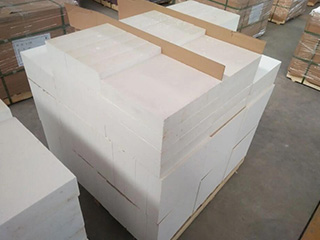Corundum bricks are a type of refractory material made from corundum, also known as alpha-alumina. These bricks are widely used in thermal processing applications where high temperatures and chemical resistance are required. In this article, we will discuss the properties and applications of corundum bricks, as well as their manufacturing process and maintenance.

Properties of Corundum Bricks
Corundum bricks have a number of properties that make them suitable for use in thermal processing applications. These properties include:
1.High Temperature Resistance: Corundum bricks can withstand temperatures up to 1800°C, making them ideal for use in high-temperature furnaces, kilns, and other thermal processing equipment.
2.Excellent Chemical Resistance: Corundum bricks are highly resistant to chemical attack, including acids, alkalis, and molten metals. This property makes them suitable for use in corrosive environments.
3.High Strength: Corundum bricks have high compressive strength, which allows them to withstand the weight of heavy loads and high-pressure conditions.
4.Low Thermal Conductivity: Corundum bricks have low thermal conductivity, which helps to reduce heat loss and energy consumption in thermal processing applications.
5.Good Thermal Shock Resistance: Corundum bricks have good thermal shock resistance, which means they can withstand rapid changes in temperature without cracking or breaking.
Applications of Corundum Bricks
Corundum bricks are widely used in a variety of thermal processing applications, including:
1.Steel Industry: Corundum bricks are used in the production of steel and other metals, including aluminum, copper, and nickel. They are used to line furnaces, ladles, and other equipment used in the melting, refining, and casting of metal.
2.Chemical Industry: Corundum bricks are used in the chemical industry to line reactors, kilns, and other equipment used in the production of chemicals, including fertilizers, plastics, and synthetic fibers.
3.Glass Industry: Corundum bricks are used in the glass industry to line furnaces and other equipment used in the melting and shaping of glass.
4.Petrochemical Industry: Corundum bricks are used in the petrochemical industry to line reactors, kilns, and other equipment used in the refining of petroleum products.
5.Power Generation Industry: Corundum bricks are used in the power generation industry to line boilers, turbines, and other equipment used in the production of electricity.
Manufacturing Process of Corundum Bricks
The manufacturing process of corundum bricks involves several steps, including:
1.Raw Material Preparation: The raw materials used to make corundum bricks are high-purity alumina and other additives. These materials are crushed, ground, and mixed together to form a uniform powder.
2.Molding: The powder mixture is then molded into the desired shape using a hydraulic press or other molding equipment. The molds used can be of various shapes and sizes, depending on the application.
3.Drying: The molded bricks are then dried in a kiln or oven to remove any moisture.
4.Firing: The dried bricks are then fired in a kiln at temperatures of up to 1800°C to sinter the powder and form a solid, dense brick.
5.Finishing: The fired bricks are then inspected, trimmed, and finished to the desired size and shape.
Maintenance of Corundum Bricks
Proper maintenance of corundum bricks is essential to ensure their long-term performance and durability. Some maintenance tips for corundum bricks include:
1.Regular Inspection: Corundum bricks should be inspected regularly to check for any signs of wear or damage, such as cracking or chipping.
2.Cleaning: Corundum bricks should be cleaned regularly to remove any buildup of dirtor other contaminants. This can be done using a soft-bristled brush or a vacuum.
3.Repairs: Any damaged or worn corundum bricks should be repaired or replaced as soon as possible to prevent further damage and maintain the integrity of the equipment.
4.Refractory Coatings: Applying a refractory coating to corundum bricks can help to protect them from chemical attack and extend their lifespan.
5.Temperature Control: Proper temperature control is essential to prevent thermal shock and ensure the long-term performance of corundum bricks. Equipment should be heated and cooled slowly to prevent rapid changes in temperature.
Conclusion
Corundum bricks are an important type of refractory material used in a wide range of thermal processing applications. They offer high temperature resistance, excellent chemical resistance, high strength, low thermal conductivity, and good thermal shock resistance. The manufacturing process involves raw material preparation, molding, drying, firing, and finishing. Proper maintenance is essential to ensure their long-term performance and durability. With proper care and maintenance, corundum bricks can provide reliable and efficient service for many years in a variety of industries.
Contact: Mgr. Han
Phone: 0086-13589497465
Email: 1255953279@qq.com
Add: Industrial Area of Lingzi Town,Zichuan District,Zibo City, Shandong,China